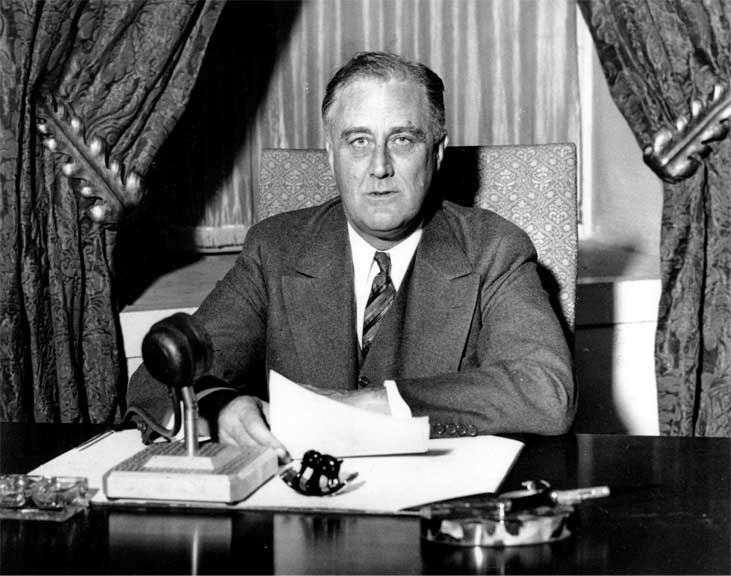FDR and the Economy in the Second Term

Pearl Harbor December 7, 1941
Roosevelt was cautious regarding domestic affairs during his second term. He supported a balanced budget, resulting in cutbacks in government relief expenditures. This caused a severe recession, which was only alleviated when Roosevelt abandoned the balanced budget and returned to greater spending. The President gave his support for anti-lynching legislation, while at the same time remaining neutral in many of the labor crises taking place during this time.
Roosevelt's policies during his second term were often determined by his needs to satisfy both conflicting supporters, as well as his own conflicting views. These conflicts manifested themselves in three main areas; labor rights, the rights of Blacks, and fiscal policy.
Increasing levels of industrial violence marked 1937 and 1938. There were a number of violent strikes, as well as, violent police reactions to the strikes. In one case, in Chicago, police killed 10 unarmed demonstrators. Roosevelt did his best not to take sides. On one hand, he had a reputation as a strong labor supporter. Many of the strikes were not popular with farmers and middle class workers who were his key supporters. On the other hand, labor management expected to receive his support. Roosevelt ultimately attacked both sides for the violence.
Roosevelt continuously walked a thin line. regarding the area of Black rights. Southern democrats supported Roosevelt, assuming he would continue supporting segregation. New Deal liberals, as well as Eleanor, continuously pushed for improved conditions for Blacks. The President was forced to take a public position, when in January 1938 he introduced the "Anti-lynching Bill" before the Senate. The bill ultimately died due to a Southern filibuster, but states soon passed anti lynching bills to forestall a Federal one, and the number of lynching dropped dramatically.
In early 1937, all economic indicators showed the economy almost fully recovered, despite continuing high levels of unemployment. As a result, Roosevelt made balancing the budget a high priority. While he was still concerned for the poor, his basic conservative fiscal background made the decision natural. Unfortunately, the effect was to remove 4 billion dollars from the economy, causing a very sharp recession. Roosevelt's initial reaction was to let the economy run its course, while trying to talk about confidence and cooperation between labor and industry. This approach had little effect. It was not until April 1938, that Roosevelt changed course and supported renewed government spending. The spending had almost an immediate effect and began to relieve the recession; long before defense purchasing ended it completely in 1939.
 >
>